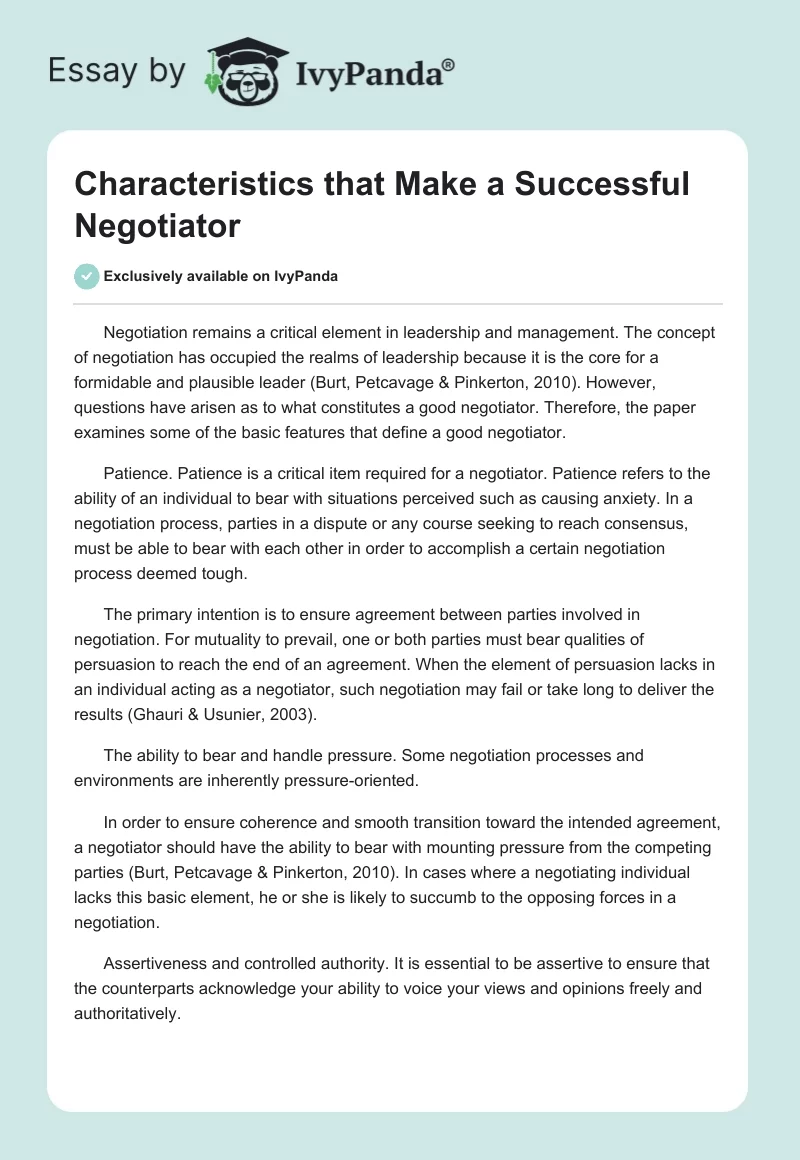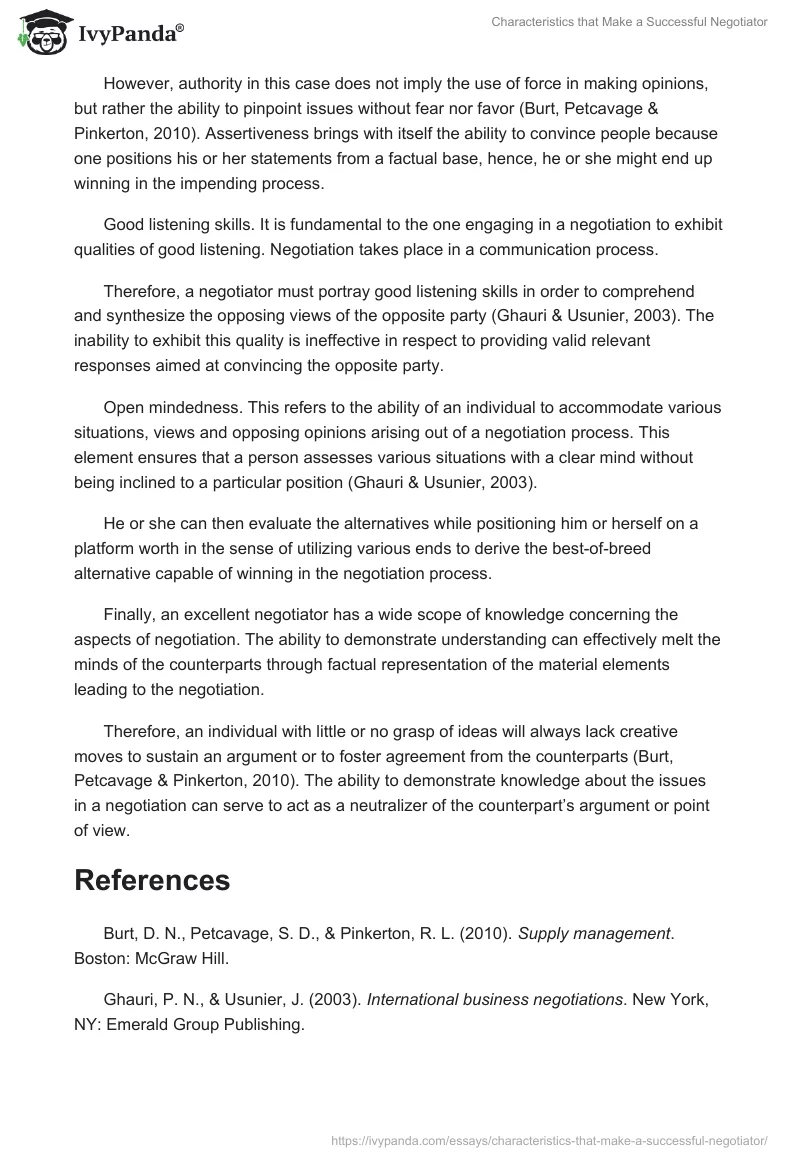Negotiation remains a critical element in leadership and management. The concept of negotiation has occupied the realms of leadership because it is the core for a formidable and plausible leader (Burt, Petcavage & Pinkerton, 2010). However, questions have arisen as to what constitutes a good negotiator. Therefore, the paper examines some of the basic features that define a good negotiator.
Patience. Patience is a critical item required for a negotiator. Patience refers to the ability of an individual to bear with situations perceived such as causing anxiety. In a negotiation process, parties in a dispute or any course seeking to reach consensus, must be able to bear with each other in order to accomplish a certain negotiation process deemed tough.
The primary intention is to ensure agreement between parties involved in negotiation. For mutuality to prevail, one or both parties must bear qualities of persuasion to reach the end of an agreement. When the element of persuasion lacks in an individual acting as a negotiator, such negotiation may fail or take long to deliver the results (Ghauri & Usunier, 2003).
The ability to bear and handle pressure. Some negotiation processes and environments are inherently pressure-oriented.
In order to ensure coherence and smooth transition toward the intended agreement, a negotiator should have the ability to bear with mounting pressure from the competing parties (Burt, Petcavage & Pinkerton, 2010). In cases where a negotiating individual lacks this basic element, he or she is likely to succumb to the opposing forces in a negotiation.
Assertiveness and controlled authority. It is essential to be assertive to ensure that the counterparts acknowledge your ability to voice your views and opinions freely and authoritatively.
However, authority in this case does not imply the use of force in making opinions, but rather the ability to pinpoint issues without fear nor favor (Burt, Petcavage & Pinkerton, 2010). Assertiveness brings with itself the ability to convince people because one positions his or her statements from a factual base, hence, he or she might end up winning in the impending process.
Good listening skills. It is fundamental to the one engaging in a negotiation to exhibit qualities of good listening. Negotiation takes place in a communication process.
Therefore, a negotiator must portray good listening skills in order to comprehend and synthesize the opposing views of the opposite party (Ghauri & Usunier, 2003). The inability to exhibit this quality is ineffective in respect to providing valid relevant responses aimed at convincing the opposite party.
Open mindedness. This refers to the ability of an individual to accommodate various situations, views and opposing opinions arising out of a negotiation process. This element ensures that a person assesses various situations with a clear mind without being inclined to a particular position (Ghauri & Usunier, 2003).
He or she can then evaluate the alternatives while positioning him or herself on a platform worth in the sense of utilizing various ends to derive the best-of-breed alternative capable of winning in the negotiation process.
Finally, an excellent negotiator has a wide scope of knowledge concerning the aspects of negotiation. The ability to demonstrate understanding can effectively melt the minds of the counterparts through factual representation of the material elements leading to the negotiation.
Therefore, an individual with little or no grasp of ideas will always lack creative moves to sustain an argument or to foster agreement from the counterparts (Burt, Petcavage & Pinkerton, 2010). The ability to demonstrate knowledge about the issues in a negotiation can serve to act as a neutralizer of the counterpart’s argument or point of view.
References
Burt, D. N., Petcavage, S. D., & Pinkerton, R. L. (2010). Supply management. Boston: McGraw Hill.
Ghauri, P. N., & Usunier, J. (2003). International business negotiations. New York, NY: Emerald Group Publishing.

